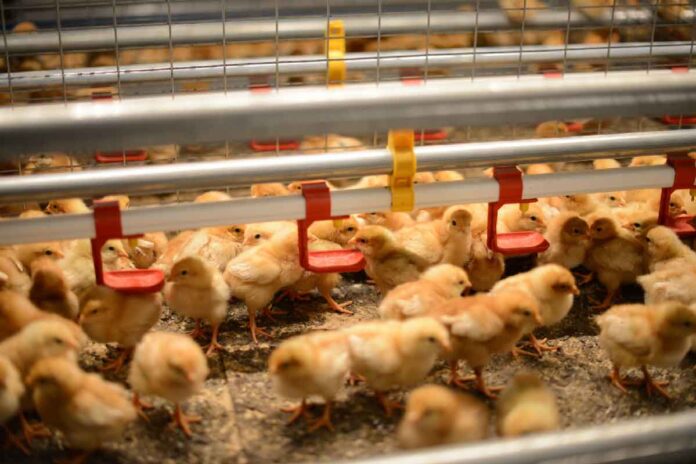
Understanding the consequences of rearing experiences on the behavior and bone integrity of laying hens can help inform solutions to animal welfare and management concerns.
Research into laying hen housing has focused primarily on the layer environment (post 16-18 weeks of age). It is well documented that early experiences can have lasting developmental effects on hen cognition and musculoskeletal health. Moreover, mounting evidence indicates that pullet housing and management decisions can have measurable impacts on many aspects of hen welfare, productivity and ease of management. We review the ways in which early environments can affect hen development, and provide examples of implications for hen welfare and management.
The increased use of cage-free aviary housing systems within the egg industry has been accompanied by an upsweep in pullet housing and management research. This is not surprising given that these early conditions are experienced for the first 16-18 weeks of a pullet’s life; a period of pronounced cognitive and musculoskeletal development. Opportunities to engage with complex early environments can have positive long-term consequences on both aspects of development, which in turn influence social behavior, and space and resource use. For example, as compared to cage-reared hens, birds reared in aviaries were shown to have better working memory and decreased fearfulness when evaluated in their layer environments. At 19 weeks of age, shortly after being transferred into identical layer housing, hens that had been raised in multi-tier aviaries used elevated components of their pens to a greater extent than cage-reared hens. Concerning musculoskeletal health, aviary versus cage rearing has been associated with greater total and cortical bone cross-sectional areas for the radius and tibia at 16 and 73 weeks of age.
Differences in bone mineral distribution have also been reported between the two rearing groups. Layer housing was identical for both rearing groups within each study, emphasizing the role of early experiences on the described outcomes.
Whereas the rearing systems described above differed in many dimensions, less pronounced modifications of early housing can also result in measurable differences in cognition, musculoskeletal health, and consequently space and resource use. Withholding perch access from placement to 8 weeks of age reduced the pullets’ abilities to move upward across perches, possibly as a result of reduced spatial cognition. On the other hand, early perch access during rearing has been associated with reduced occurrence of floor laying and cloacal cannibalism in mature flocks. Early perch access has also been shown to improve musculoskeletal health through end of lay.
As previously noted, developmental aspects of cognition, musculoskeletal health, and resource use can contribute to, or mitigate, hen welfare and management concerns. The occurrence of keel bone fractures, which can be painful and affect hen productivity, is an example of one such concern. Although keel bone fractures can occur in all types of layer housing, higher prevalence has been associated with increased housing system complexity. However, differences in keel fracture prevalence reported among mature layers could reflect differences in keel fracture susceptibility grounded in early experience. A large-scale, multi-institutional project is currently under way to determine the impacts of early rearing experiences on the development of spatial awareness, bone health, and keel fracture risk for laying hens.
Preliminary results suggest that early experiences affect the way in which pullets respond to vertical structures when tested on a visual cliff, the trajectory of bone development, and the distribution of hens within multi-tier aviary layer housing. The focus on early experience and identification of broadly defined developmental mechanisms underlying keel bone fractures (and other welfare and management concerns support the design of customized early mitigation strategies to address concerns observed across the many types of existing layer housing systems, making this a particularly powerful approach.
References are available on request
From the Proceedings of the Midwest Poultry Federation Convention – 2022
















